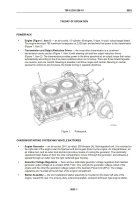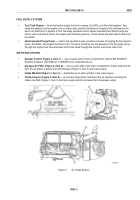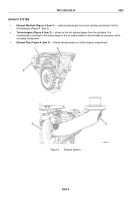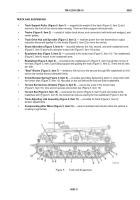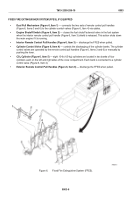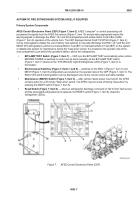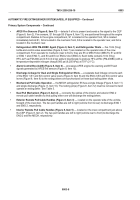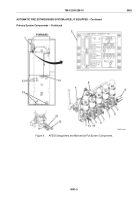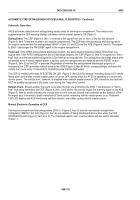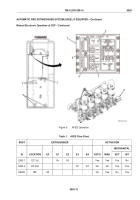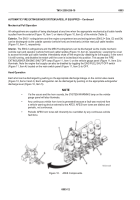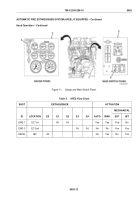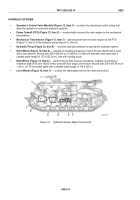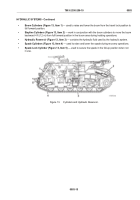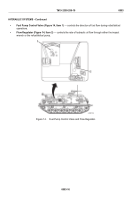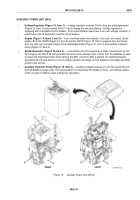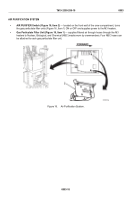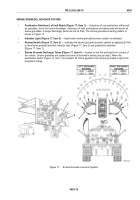TM-9-2350-256-10 - Page 52 of 796
AUTOMATIC FIRE EXTINGUISHER SYSTEM (AFES), IF EQUIPPED – Continued
Automatic Operation
AFES automatic detection and extinguishing exists solely for the engine compartment. The vehicle horn
supplements the CEP warning display only when vehicle master power is ON (Table 1).
During Event.
The CEP (Figure 9, Item 1) receives a fire signal from one or more of the five fire sensors
(Figure 9, Item 7) that are located in the engine compartment. The CEP then simultaneously delivers signals to
the engine compartment first extinguishers (ENG 1= Exts. E1 and E2) and the ACB (Figure 9, Item 6). The signal
to ENG 1 discharges the FM-200BC agent to the engine compartment.
Postevent.
If the AFES extinguishers discharge properly, the associated extinguisher status LEDs flash at a
regular rate. If the AFES extinguishers did not discharge properly, the CEP (Figure 9, Item 1) recognizes a "fail to
flow" fault, and the associated extinguisher LEDs flash at an irregular rate. The extinguisher discharge status blink
will persist, even if vehicle master power is cycled, until the extinguishers are replaced and the RESET button
(Figure 9, Item 3) on the CEP is pressed. Regardless of whether the extinguishers discharged properly or
improperly, the CEP generates a short pulse to the ACB (Figure 9, Item 6) which, correspondingly, activates the
vehicle horn once every 10 seconds to remind the crew that the fault exists.
The CEP is enabled whenever its SYSTEM ON LED (Figure 9, Item 2) is illuminated, including during a 30-minute
"keep alive" period after vehicle master power is turned OFF, during which the AFES is operating on unswitched
vehicle power. The vehicle horn, however, is disabled when vehicle master power is OFF; therefore, any fault will
NOT be audibly recognized in this state, even during the "keep alive" period.
Reflash Event.
Should another fire event occur after the first one and before the ENG 1 low-pressure or "fail to
flow" fault being remedied, the CEP (Figure 9, Item 1) will deliver the normal engine fire warning signal to the ACB
(Figure 9, Item 6), which activates the vehicle horn for one tone per second that continues for the duration of the
fire signal plus 3 seconds to yield a minimum of three cycles, assuming vehicle master power is on. Postevent
CEP LED display and ACB functioning will then resume, even after cycling vehicle master power.
Manual Electronic Operation at CEP
The engine compartment first extinguishers (ENG 1) (Figure 9, Item 5) and the mechanical compartment
extinguisher (MECH= Ext. E5) (Figure 9, Item 4) are capable of being discharged at any time when the CEP
SYSTEM ON LED (Figure 9, Item 2) is lit. The individual switch cover must be raised and the switch activated
(Table 1).
TM 9-2350-256-10
0003
0003-10
Back to Top


